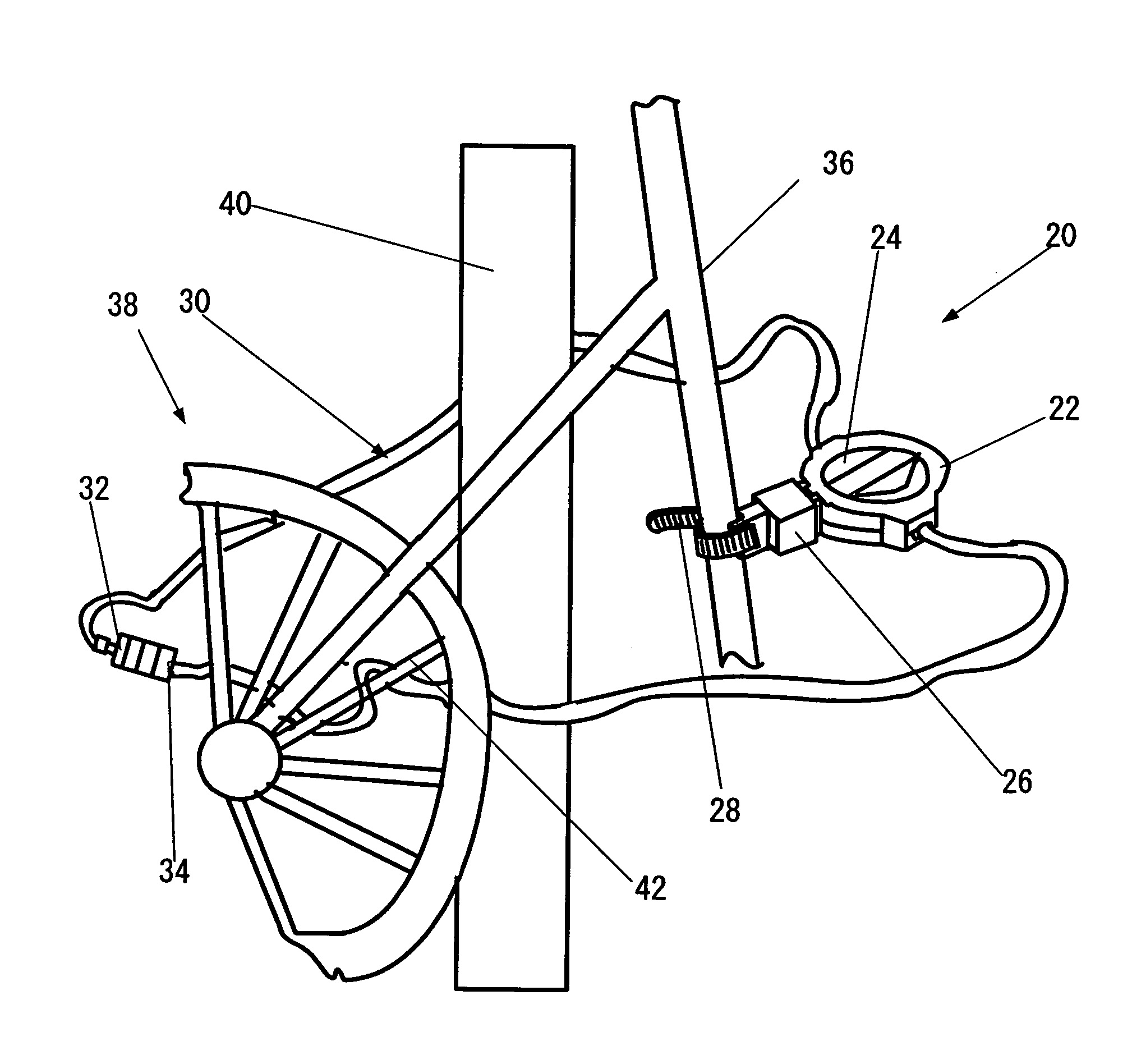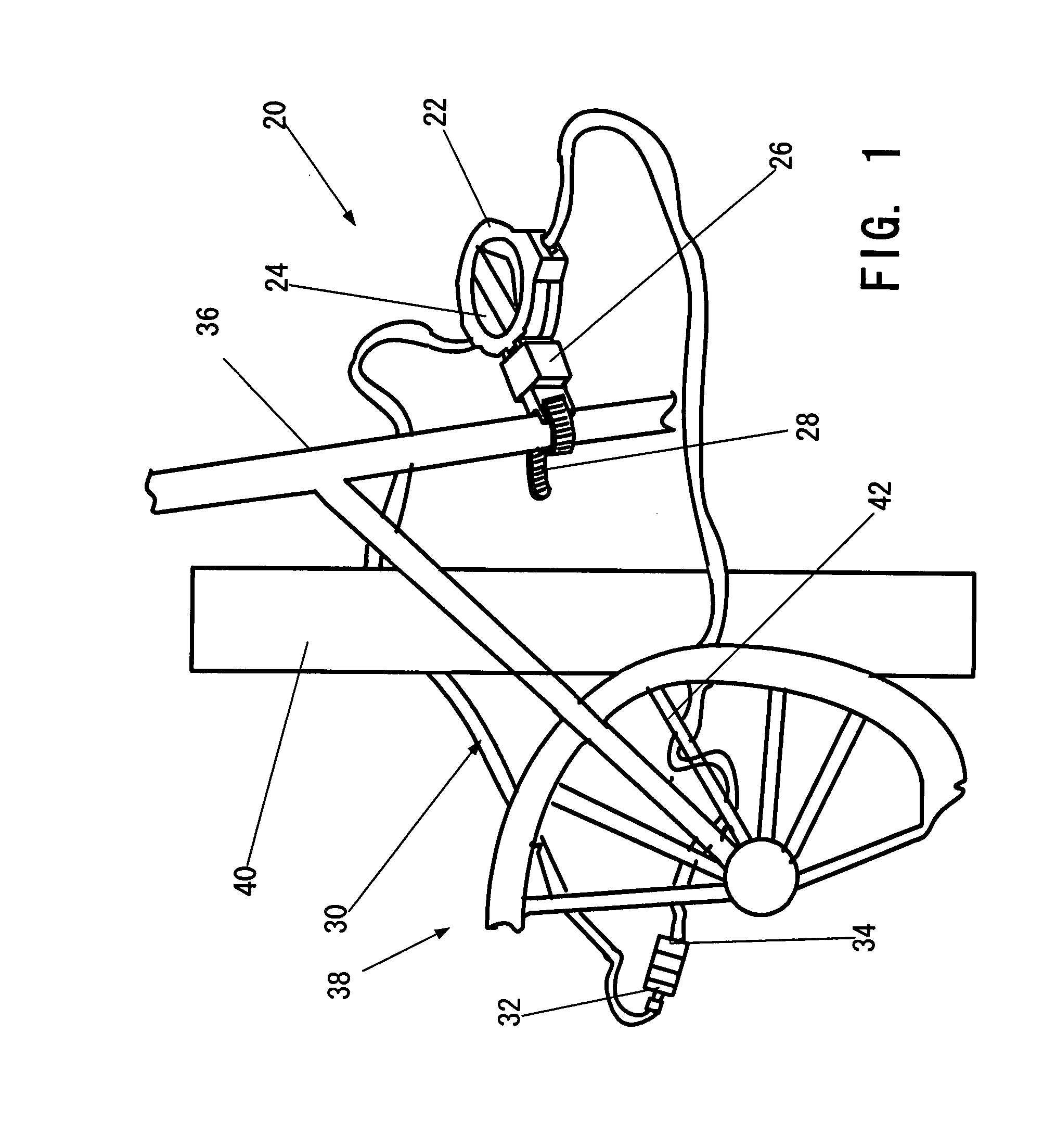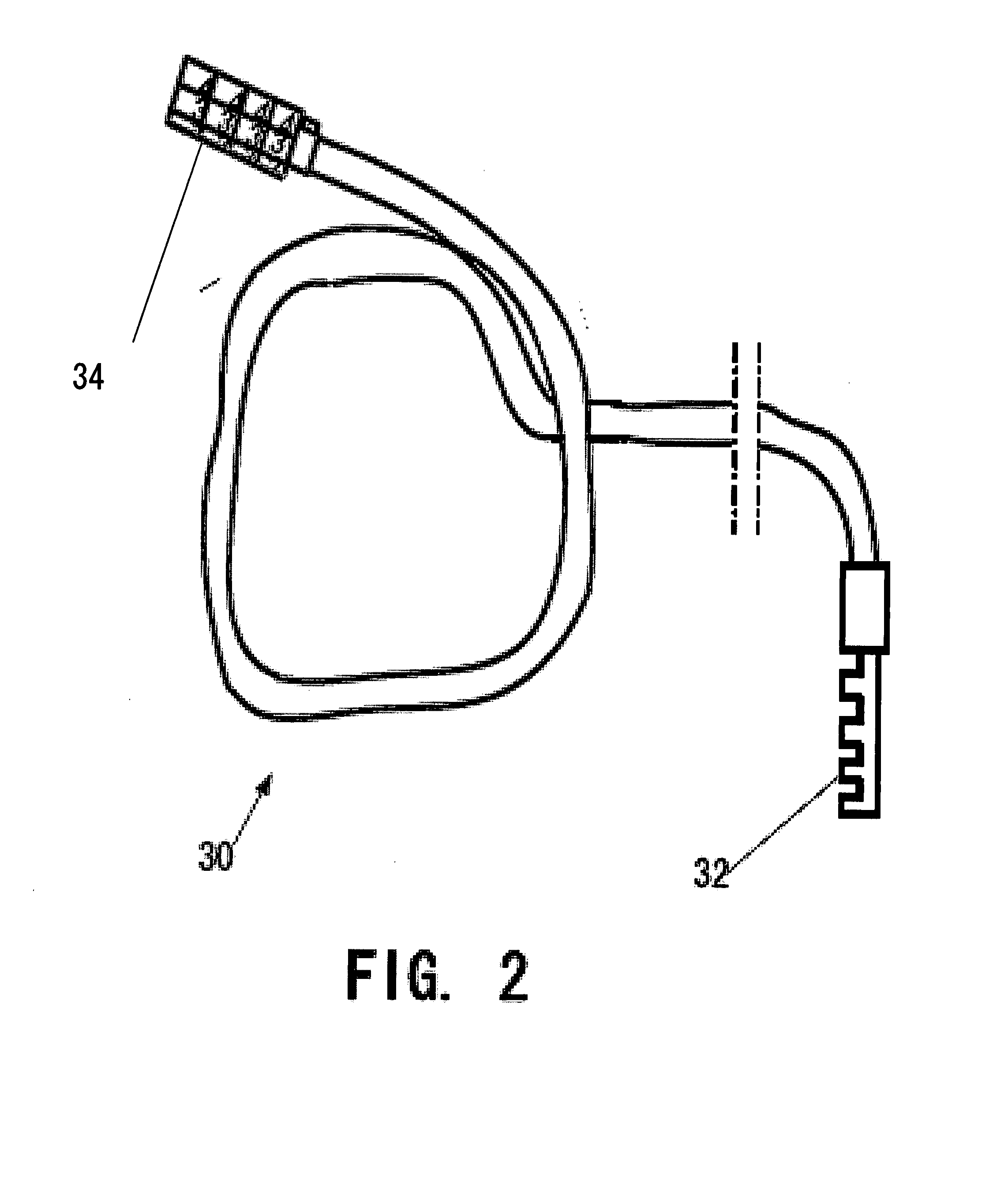Anti-theft locking device with a flexible cable
a locking device and flexible technology, applied in padlocks, building locks, constructions, etc., can solve the problems of inconvenient application and storage, heavy bicycle locks, dangerous to both the bicycle and the consumer, and the existing cable with locks is still relatively cumbersome, etc., to achieve easy and inexpensive manufacturing, simple construction, and easy manufacturing
- Summary
- Abstract
- Description
- Claims
- Application Information
AI Technical Summary
Benefits of technology
Problems solved by technology
Method used
Image
Examples
Embodiment Construction
[0028]The anti-theft cable locking device of the invention is particularly suited for securing a bicycle but is not limited only to such application. A general view of the locking device of the invention, which as a whole is designated by reference numeral 20, is shown in FIG. 1 in use for securing a bicycle to a stationary post 40. The locking device 20 consists of a substantially cylindrical housing 22 that has a substantially cylindrical surface and contains a cable rotating drum 24, only the handle portion of which is shown in FIG. 1, a device holder 26 with a securing strap 28, and a wire cable 30 with locking elements 32 and 34 on the cable ends. In FIG. 1 the cable 30 is shown in the form of a loop wound around a frame section 36 of the bicycle 38, the stationary column 40 installed in the street, and is guided around the wheel spike 42. The housing serves not only for retracting the cable but also as a cable storage device.
[0029]Let us now consider the main parts of the lock...
PUM
 Login to View More
Login to View More Abstract
Description
Claims
Application Information
 Login to View More
Login to View More - R&D
- Intellectual Property
- Life Sciences
- Materials
- Tech Scout
- Unparalleled Data Quality
- Higher Quality Content
- 60% Fewer Hallucinations
Browse by: Latest US Patents, China's latest patents, Technical Efficacy Thesaurus, Application Domain, Technology Topic, Popular Technical Reports.
© 2025 PatSnap. All rights reserved.Legal|Privacy policy|Modern Slavery Act Transparency Statement|Sitemap|About US| Contact US: help@patsnap.com



